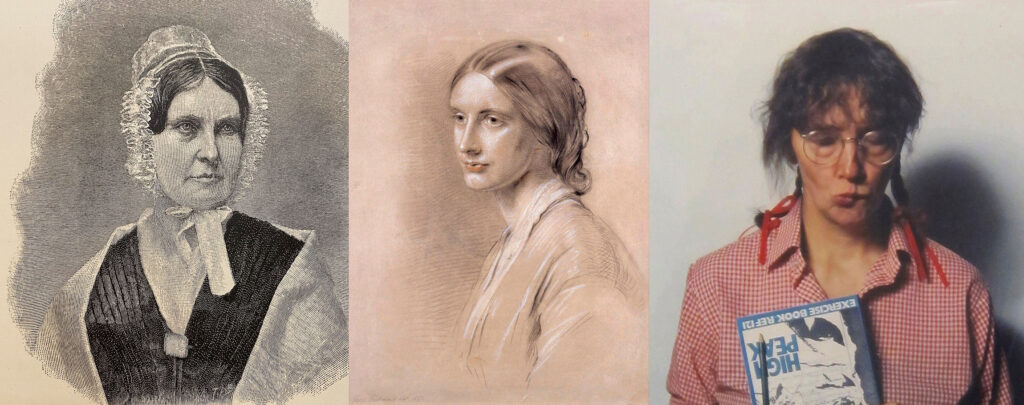Radical
Non-Resistance
& the Art of
Transgression

Curating the exhibition?
Why and who for?
In the winter of 2020 at Riverside Artist Studios, Middlesbrough, I wondered the viability of initiating/authoring/curating an exhibition project about displacement, cultural empowerment and social transformation. By this time my research into key publications (listed below) had helped me figure a more substantive mindset to questions about why, how and who could/would be involved? ‘Radical Non-Resistance & The Art of Transgression: Pease, Butler & Spence’ quickened as an idea prior to COVID lockdown and became specific in its immediate aftermath. The impetus to push this project is, at its simplest, a way for me to say ‘hello again and thank you’ to Jo Spence who was my post graduate studio tutor in Fine Art at Newcastle Polytechnic in 1989. Unsurprisingly the impact of her work and its agency is an active thread in the exhibition work presented at each venue. The objective to promote positive regard for the achievement of people of, from and working in the North East was and is a focus point for me to continue to aim for.
Phil Gatenby, Curator 01.07.2025
Many thanks
The exhibition project titled ‘Radical Non-Resistance & The Art of Transgression: Pease, Butler & Spence’ appreciate support from sponsors, host venues and project partners alongside commissioned artists who generously offered their knowledge and expertise throughout.
Sponsors
Arts Council England (ACE); Creative Darlington; Josephine Butler College; Durham University and; The Auxiliary (Middlesbrough).
Commissioned Artists
Dave Allinson, Pip Dickens, Alec Gatenby, Claire Grey, Karen Melvin, Pat Naldi, Alicia Paz, Nicki Peacock, Jo Spence Estate (via Richard Saltoun Gallery), Teresa Stehlikova and Ikuko Tsuchiya.
Host Venue and people support on-site
Josephine Butler College, Durham University. June 5th – July 6th 2023
Exhibition title: ‘Indelicate, Ungenteel, Vulgar & Outrageous Women’ IUVOW
Pete Carson, operations team leader
Billy Errington, project specific student liaison
Birdie Jackson. ‘Docusong’ sound work sponsored by Josephine Butler College
Professor Simon J.James, Principal, Josephine Butler College (JBC)
Karen Langdon, Vice Principal, academic lead, on-site co-ordination
Dr Louise Powell, Writer in Residence (JBC) introductory IUVOW text
Lynsey A. Drinkhall, student experience officer
Jane Robinson, author ‘Josephine Butler – A very brief history’ SPCK 2020 & Guest Speaker
Host Venue and people support on-site
Crown Street Library, Gallery. January 31st – March 25th 2024
Exhibition title: ‘Place, People & Living Memory’ PP&LM
Stephen Wiper, Creative Darlington Manager
Katherine Williamson, Librarian, Centre for Local Studies
Chris Lloyd, Chief Features Editor & Guest Speaker, Northern Echo, Darlington
(Exhibition feature: ‘Stepping from the Shadows’ published 03.02.2024)
Key Research Publications
Clare Midgley: ‘Women Against Slavery – The British Campaign 1780-1870’ Routledge 1992
Anna M. Stoddart: ‘Elizabeth Pease Nichol’ J.M.Dent & Co 1899
Jo Spence: ‘Cultural Sniping – The Art of Transgression’ Routledge 1995
‘The Women’s Press Bookclub Catalogue’ April – June 1991 issue
Design, Production, Fabrication & Installation
Duncan Butterfield, vinyl signage
Anna Byrne, The Auxiliary, bid writing
Alec Gatenby, Studio Projective, photo-essay print/screen design
Jonny Green, installation
Adam Howarth, bespoke framing
Gary Mawson, Tees Print, photo-essay/print/publicity production
Nicky Peacock, exhibition staging
Adam Shaw, installation, venue fabrication
Liam Slevin, The Auxiliary, screen/sound/media equipment
Mark Thompson, Exhibition Walls Company, venue fabrication
Alex Wallis, Van Haulin, specialist Fine Art carriage
Licensing & Copyright
Alamy, photo-stock agency
Mary Evans, photo-stock agency
Maggie Murray, photographer
National Portrait Gallery, Primary Collection
Saltoun Gallery, Jo Spence Estate
Financial Times UK, archive newsprint
New York Times USA, archive newsprint
Project Curator
Phil Gatenby b 1950. Former Head of Department, Fine Art (Retired 2014) School of Arts & Media, Teesside University. Currently self employed (2014) artist/curator/practitioner via Materiality in Painting.